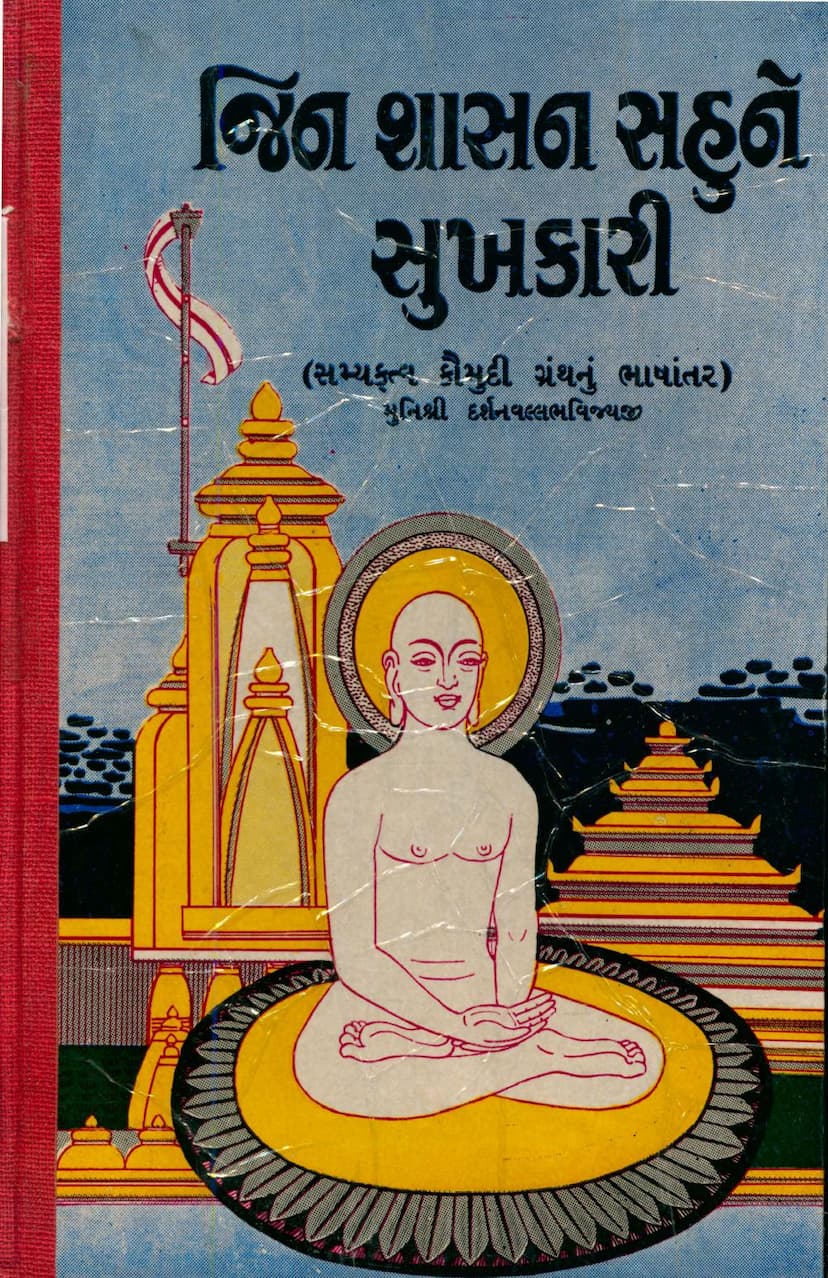Jinshasan Sahune Sukhkari
Added to library: September 2, 2025

Summary
This summary is based on the provided Jain text, "Jinshasan Sahune Sukhakari," translated by Muni Shri Darshan Vallabh Vijayji. The book is presented as a Gujarati translation of the "Samyaktva Kaumudi" text.
Overall Theme:
The book, "Jinshasan Sahune Sukhakari" (The Jain Tradition is Beneficial to All), aims to guide readers towards understanding and achieving Samyaktva (Right Faith/Belief), which is presented as the cornerstone of Jain spiritual practice and the key to true happiness and liberation.
Key Concepts and Structure:
The book is structured into several chapters or "Prakaran" (proposals/sections), indicated by the chapter titles provided in the table of contents. While the summary focuses on the core themes, the book likely elaborates on these through stories, explanations, and philosophical discourse.
Core Message of Samyaktva (Right Faith):
- The Essence of Jainism: The text emphasizes that Samyaktva is the most crucial element in the Jain path. It's described as the "root," "door," "foundation," "treasure," and "support" of all virtuous conduct (Dharma).
- Distinguishing True Dharma: The book highlights the importance of understanding the true essence of Dharma and warns against practicing it blindly or mistaking rituals for the core principles. Samyaktva is the differentiator between genuine practice and mere ritualistic labor.
- The Source of True Happiness: The ultimate goal of Samyaktva is to attain true and lasting happiness, which is distinct from temporary worldly pleasures. It's the path that leads away from suffering and towards liberation (Moksha).
- The Role of True Knowledge and Conduct: Samyaktva is achieved through right knowledge (Samyak Gyan), right faith (Samyak Darshan), and right conduct (Samyak Charitra). The text implies that these are intertwined and lead to the manifestation of the true self.
- Overcoming Delusion (Mithyattva): The book stresses the need to eradicate Mithyattva (false belief or delusion), which is the root cause of suffering and entanglement in the cycle of birth and death. Samyaktva is the light that dispels this darkness.
Narrative Elements and Illustrative Stories:
The book appears to utilize stories from Jain scriptures and history to illustrate its points. Based on the chapter titles and content snippets:
- Examples of Kings and Renowned Figures: Stories involving kings like Samprati Raja and Shrenik Raja, as well as prominent figures like Ahaddas Sheth and the virtuous wife Padmashri, seem to be central to the narrative. These stories likely showcase the transformative power of Samyaktva and the consequences of its absence or the practice of Mithyattva.
- Parables and Analogies: The text uses analogies like the jeweler testing diamonds, the importance of the root for a tree, and the elephant's goad for controlling the mind to explain spiritual concepts.
- Emphasis on Virtuous Conduct: The narratives illustrate the importance of various virtues such as Dana (charity), Shil (chastity/morality), Tapa (austerity), Daya (compassion), Vinaya (humility), and Samyak Gyan (right knowledge).
Key Aspects of Samyaktva Discussed:
- The Eightfold Path (implied): While not explicitly listed as an eightfold path, the descriptions of virtuous conduct and the stages of spiritual progress suggest adherence to core Jain principles.
- The Ten Elements of Samyaktva: The text mentions ten types of Samyaktva and five types of Mithyattva, suggesting a detailed classification for understanding and application.
- The Importance of the Guru: The role of the Guru (Acharya, Muni, Suri) is highlighted as essential for guiding disciples towards understanding and practicing Samyaktva.
- The Six Principles of Right Conduct: The book mentions the importance of principles related to divine adoration, guru worship, and upholding the Jain faith.
- Types of Samyaktva: The text touches upon different types like Oupshamik, Kshayopashamik, and Kshayik Samyaktva, indicating a layered understanding of spiritual attainment.
- The Impermanence of Worldly Life: The book likely underscores the transient nature of worldly pleasures and possessions, encouraging detachment and focus on spiritual goals.
The Translator and Publisher:
- Author/Translator: Muni Shri Darshan Vallabh Vijayji M.S. is credited as the translator.
- Inspiration: The book is inspired by the teachings of Ganivarya Shri Jagvallabh Vijayji M.S.
- Publisher: Dharmchakra Prabhavak Trust, Nasik.
- First Edition: 1990 (Samvat 2046).
Overall, "Jinshasan Sahune Sukhakari" appears to be a spiritually uplifting and instructive work that delves into the fundamental principles of Jainism, with a particular focus on the paramount importance of Samyaktva for achieving happiness, spiritual progress, and ultimate liberation.